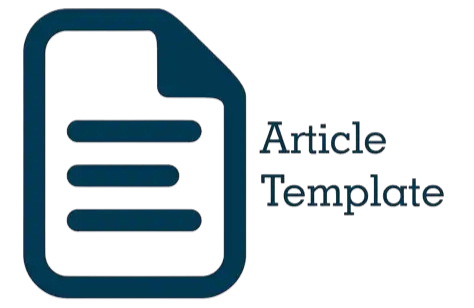Strengthening Ukhuwah Basyariyah Through Nyongkolan Tradition: A PAR Approach to Exploring the Local Wisdom of the Sasak Tribe in Lombok
DOI:
https://doi.org/10.21580/dms.v24i2.23582Keywords:
Nyongkolan, Participatory Action Research, Sasak, Ukhuwah BasyariyahAbstract
This research aims to explore the role of Nyongkolan tradition in strengthening ukhuwah basyariyah in Sasak community, Lombok, through Participatory Action Research (PAR) approach. The background of this research is the phenomenon of modernization that affects local traditions, such as the shift from traditional musical instruments to more modern ones, as well as reduced community participation. This activity involves observation and active participation of the community in the implementation of Nyongkolan, with a focus on strengthening the values of interfaith and social brotherhood. The results showed that Nyongkolan serves as an important tool for strengthening social relations between citizens and interfaith tolerance, creating a space for interaction between Muslims and non-Muslims. In addition, it raises people's awareness of the importance of preserving local wisdom, and gives them a sense of pride in their cultural identity. The research also identified challenges faced in preserving this tradition, including the changing preferences of the younger generation and the pressures of modernization. Community participation in this study confirms the importance of the Nyongkolan tradition in maintaining social cohesion amidst socio-cultural changes.Downloads
References
Alamsyah, A. (2017). Pluralisme Agama Dalam Pandangan Al-Quran Dan Implementasi Pendidikan Islam. TARBAWI: Jurnal Pendidikan Agama Islam, 2(01), 71–80.
Apriyani, N., & Yusuf, M. (2024). KONSEP UKHUWAH DALAM AL-QUR’AN. Kumpulan Artikel Pendidikan Anak Bangsa (Kapasa): Jurnal Pendidikan, Sosial Dan Humaniora, 4(2), 77–89.
FM, S. M. O. D. S., Marijo, M. O. D. S. F. M., & Sumaryadi, S. (2019). On Kecimol and Nyongkolan’s Values Transformation. International Conference on Art and Arts Education (ICAAE 2018), 83–88.
Gaffar, A. (2016). Hegemoni Modernitas dalam Sistem Pelaksanaan Tradisi Nyongkolan Sasak Lombok Timur. Universitas Sebelas Maret.
Handaru, B. I. W. (2021). Tantangan Agama di Era Globalisasi: Analisis Strategi Komunikasi, Karakteristik dan Materi Dakwah. El Madani: Jurnal Dakwah Dan Komunikasi Islam, 2(01), 1–24.
Hasanah, H. (2020). PROSESI NYONGKOLAN. 2507(February), 1–9.
Hazani, D. C. (2020). Komunikasi Interaksi Sosial Antar Remaja dalam Meningkatkan Ukhuwah Islamiyah di Desa Saba Lombok Tengah. Edisi, 2(1), 1–24.
Hernawati, L., Mahmuddin, & Anggriani, D. (2020a). Pergeseran Tradisi Nyongkolan Pada Proses Perkawinan Adat Suku Sasak Di Kabupaten Mamuju Tengah. Sosioreligius: Jurnal Ilmiah Sosiologi Agama, 5(1), 27–35. https://journal.uin-alauddin.ac.id/index.php/Sosioreligius/article/view/23491
Hernawati, L., Mahmuddin, & Anggriani, D. (2020b). Pergeseran Tradisi Nyongkolan Pada Proses Perkawinan Adat Suku Sasak Di Kabupaten Mamuju Tengah. Sosioreligius: Jurnal Ilmiah Sosiologi Agama, 5(1), 27–35. https://journal.uin-alauddin.ac.id/index.php/Sosioreligius/article/view/23491
Hernawati, L., Mahmuddin, M., & Anggriani, D. (2020c). Pergeseran Tradisi Nyongkolan Pada Proses Perkawinan Adat Suku Sasak di Kabupaten Mamuju Tengah. SOSIORELIGIUS: JURNAL ILMIAH SOSIOLOGI AGAMA, 5(1).
Iqbal, M., Basuno, E., & Budhi, G. S. (2007). Esensi dan Urgensi Kaji Tindak Partisipatif dalam Pemberdayaan Masyarakat Perdesaan Berbasis Sumberdaya Pertanian. Forum Penelitian Agro Ekonomi, 25(2), 73–88.
Iswaratama, A. (2024). Islamic Views on Shifting Cultural Values in the Nyongkolan Tradition in Lombok. Maklumat: Journal of Da’wah and Islamic Studies, 2(1), 1–8.
Jumatriadi, J. (2022). Pandangan Hukum Islam terhadap Budaya Nyongkolan di Lombok. Masaliq, 2(2), 338–351. https://doi.org/10.58578/masaliq.v2i2.485
Juniati, R. U., & Zubair, M. (2023). PERSEPSI MASYARAKAT TENTANG TRADISI NYONGKOLAN (STUDI DI KELURAHAN KARANG PULE, KECAMATAN SEKARBELA, KOTA MATARAM): English. Pendas: Jurnal Ilmiah Pendidikan Dasar, 8(3), 63–75.
Minkler, M. (2000). Using participatory action research to build healthy communities. Public Health Reports, 115(2–3), 191.
Prahana, L., & Winarko, J. (2016). adat nyongkolan suku sasak. 1, 1–23.
Ridho, F. (2023). Toleransi Dan Ukhuwah:“Membangun Harmoni Dalam Masyarakat Multikultural.” UInScof, 1(2), 1256–1268.
Sumadi, I., Jayanti, I., & Geria, A. A. R. (2013). Tradisi nyongkol dan eksistensinya di Pulau Lombok. Balai Pelestarian Nilai Budaya Bali.
Sumardi, N. K. (2018). Evolusi Gendang Beleq Lombok. Gondang, 1(2), 63–69.
Sumaryono, M. (2014). Karawitan tari : suatu analisis tata hubungan . Cipta Media.
Suparta, S. (2018). Persepsi Ulama Bangka Belitung Tentang Teori Khilafah Dan Implikasinya Terhadap Uklhwah Islamiyah Dan Ukhuwah Basyariyah Dalam Keutuhan Nkri Di Bangka Belitung. Akademika: Jurnal Pemikiran Islam, 23(2), 367–386.
Suwondo, B. (1978). Adat dan Upacara Perkawinan Daerah Nusa Tenggara Barat. Jakarta: Balai Pustaka, Proyek Penelitian Dan Pencatatan Kebudayaan Daerah Departemen Pendidikan Dan Kebudayaan.
Syawaludin, M. (2020). Multicultural Ukhuwah Concept: The Study of Various Signification on Ukhuwah Perspective of Islamic Elite Religion in Pasuruan District. Jurnal Ilmiah Islam Futura, 20(1), 69–85.
Triwahyudi, F., & Masykur, A. M. (2014). Makna Merarik Dan Nyongkolan Bagi Pasangan Pengantin Di Nusa Tenggara Barat. Jurnal Empati, 3(1), 57–69.
Yaningsih, S., Siradz, U., & Mahartha, I. (1992). Peralatan hiburan dan kesenian tradisional daerah Nusa Tenggara Barat. Departemen Pendidikan dan Kebudayaan.
Yeh, J. H., Lin, S., Lai, S., Huang, Y., Yi-Fong, C., Lee, Y., & Berkes, F. (2021). Taiwanese indigenous cultural heritage and revitalization: Community practices and local development. Sustainability, 13(4), 1799.
Downloads
Published
Issue
Section
License
Copyright (c) 2025 Dimas: Jurnal Pemikiran Agama untuk Pemberdayaan

This work is licensed under a Creative Commons Attribution-ShareAlike 4.0 International License.
Copyright
The copyright of the received article shall be assigned to the journal as the publisher of the journal. The intended copyright includes the right to publish the article in various forms (including reprints). The journal maintains the publishing rights to the published articles. Therefore, the author must submit a statement of the Copyright Transfer Agreement.*)
Licensing

This work is licensed under a Creative Commons Attribution-ShareAlike 4.0 International License.
In line with the license, authors are allowed to share and adapt the material. In addition, the material must be given appropriate credit, provided with a link to the license, and indicated if changes were made. If authors remix, transform or build upon the material, authors must distribute their contributions under the same license as the original.
_______
*) Authors whose articles are accepted for publication will receive confirmation via email and send a Copyright Transfer Agreement.









